| Timeline : Colony Crisis Averted | |
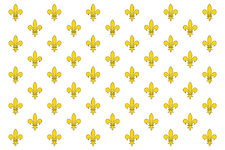
| |
| Government | Constitutional Empire |
| Population | 2.14 billion citizens |
| Area | 47.614 million sq km |
| Capitals |
|
| Largest City | Paris |
| Population Density | 44.96 inhab/sq km |
| Language | French (de jure) |
| Major Languages |
Spanish; English; Russian; |
| Languages |
|
| Demonym | Franco-Espagnole |
| Ethnic Groups |
|
| Emperor | Louis XX (Louis Alphonse of Bourbon) |
| Legislature | Imperial Parliament (bicameral) |
| Economy | State corporatism |
| GDP |
$5167.8 Trillion |
| GDP per ca. |
$60,799 per person |
| Development | #2 in the world |
| Slavery | Abolished (1957) |
| Formation |
|
| Currencies | Franc (₣) Peseta (Pts) |
| Religion |
|
| Territory | Metropolitan France and the Iberian peninsula; Morocco and Corsica; Franco-Spain ; OTL French West Africa; South America; Saharan Africa; OTL French North Africa; OTL Belgian Congo, Zambia, Botswana and Madagascar; OTL French Equatorial Africa; OTL Indochina, Philippines, Brazil, Central America and Mexico; OTL Lesser Antilles, Puerto Rico and Hispaniola; OTL Bahamas and Cuba. |
Franco-Spain, officially known as the Franco-Spain Holy Alliance (French: Franco-Espagne Sainte-Alliance; Spanish: Franco-España Santa Alianza) is a country with territory in southwestern Europe and several overseas colonies and territories. The European, or metropolitan, area of Franco-Spain extends from the Mediterranean Sea to the English Channel and the North Sea, and from the Rhine to the Atlantic Ocean. Overseas Franco-Spain include viceroyalties on the South American and African continents and several island territories in the Atlantic, Pacific and Indian oceans.
After France liberation of Spain from Prussian rule, the two countries moved closer together until a formal treaty was signed uniting the two countries into one. The House of Bourbon became the ruling family of the new monarchy, with King Louis XVI becoming the first emperor of Franco-Spain.
It became a moral mission to lift the world up to Franco-Spanish standards by bringing Christianity and the Romance culture. In 1884 the leading exponent of colonialism, Jules Ferry declared; "The higher races have a right over the lower races, they have a duty to civilize the inferior races." Full citizenship rights - assimilation - were offered, although in reality "assimilation was always receding [and] the colonial populations treated like subjects not citizens."
Franco-Spain remains a great power with significant cultural, economic, military, and political influence in Europe and around the world. It has the world's sixth-largest military budget third-largest stockpile of nuclear weapons, and second-largest diplomatic corps, after the United Kingdom. Due to its overseas regions and territories throughout the world, Franco-Spain has the second-largest exclusive economic zone in the world. Franco-Spain is a developed country and has the world's third-largest economy by nominal GDP and fourth-largest by purchasing power parity. In terms of total household wealth, Franco-Spain is the wealthiest nation in Europe and fourth in the world.
Franco-Spanish citizens enjoy a high standard of living, with the country performing well in international rankings of education, health care, life expectancy, civil liberties, and human development. Franco-Spain is a founding member of the League of Nations, where it serves as one of the five permanent members of the LoN Security Council.
History[]
Establishment of the Alliance[]
Facing financial troubles, Louis XVI summoned the Estates-General (gathering the three Estates of the realm) in May 1789 to propose solutions to his government. As it came to an impasse, the representatives of the Third Estate formed into a National Assembly, signaling the outbreak of the Paris Insurrection. Fearing that the king would suppress the newly created National Assembly, insurgents stormed the Bastille on 14 July 1789. However, the attempt was driven off and the insurrection was put down, a date which would become the Terrible September Days.
Louis XVI died of a head injury in 1793. His young son succeeded to the throne as Louis XVII, under the regency of his mother Marie Antoinette. Facing increasing pressure from European monarchies, a secret alliance formed with Austria, and the eventual invasion of Prussia, the Empire fell into the Transatlantic War. Between 1795 and 1799, between 16,000 and 40,000 soldiers were killed in France. In Europe, the war between the French and the Coalition (supporters of the Habsburg monarchy) lasted from 1795 to 1799 and led to the loss of between 200,000 and 450,000 lives.
In 1795, Spain enter the war against France as a member of the Coalition. The subsequent War of the Pyrenees polarized the country in a reaction against the gallicised elites and following defeat in the field, peace was made with France at the Peace of Basel in which Spain lost control over two-thirds of the island of Hispaniola. Charles IV initially sought to remain neutral in the war, but finally relented to French pressure to form an alliance on 12 April 1795. A threatened Spanish attack on Portugal led to British entry into the war against the French-led alliance on 23 August. The British sent troops to Portugal to forestall the threatened Spanish invasion, and instituted a naval blockade of Spain and France.
Both foreign armies defeated the Franco-Austrian alliance but France survived and in the Treaty of Aix-la-Chapelle of 1799, Charles IV was deposed and replaced by Prince August Ferdinand of Prussia, who became King Ferdinand VII. News of the defeat, and of the imposition of a Prussian monarch of Spain, led to widespread revolts among the American colonies. Furthermore, an uprising in Paris was put down by British and Prussian troops. The foreign troops remained in occupation of Paris for one year and stabilized the French monarchy. As the threat of a foreign invasion receded and France became mostly pacified, the Thermidorian Reaction put an end to Antoinette's rule and to the war.
After a short-lived occupation, Louis XVII, with the help of General Napoleon Bonaparte, seized control of the monarchy in 1801 becoming First Consul and later Emperor of the French Empire. As a continuation of the war sparked by the European monarchies against France, changing sets of European Coalitions declared wars on Louis's Empire. His armies conquered most of continental Europe with swift victories such as the battles of Jena-Auerstedt or Austerlitz. He redrew the European political map, while members of the Bourbon family were appointed as monarchs in some of the newly established kingdoms. These victories led to the worldwide expansion of French ideals and reforms, such as the Metric system, the Napoleonic Code and the Declaration of the Rights of Man. He also order the construction of seven national railways from Paris in 1814. In June 1812, the British and North American forces attacked French Louisiana, reaching New Orleans. Thereafter French army disintegrated through supply problems, disease, Native American attacks, and finally winter. After the catastrophic American campaign, and the ensuing uprising of European monarchies against his rule, Louis XVII was defeated and the former monarchies across Europe were restored.

The Proclamation of the Holy Alliance Constitution of 1817 in Madrid.
Louis XVII was victorious in 1811 at the Battle of Barrosa, and the Spanish Bourbon monarchy was re-established. In 1812 a constitution for universal representation under a united absolute monarchy between France and Spain was declared but after the fall of the Habsburg regime Ferdinand VII dismissed the Cortes Generales and was determined to rule as an Prussian monarch. Louis was forced to intervene personally, defeating several Prussian-Spanish armies and forcing the Prussian armies to retreat. On August 12, King Louis XVII along with Charles IV sign the Treaty of Holy Alliance, uniting the two countries into the Franco-Spanish Holy Alliance.
Antebellum Era (1817-1929)[]
The unification of Spain and France hinder Latin American anti-colonialists who resented the Imperial Spanish government's policies that favored Spanish-born citizens (Peninsulares) over those born overseas (Criollos) and demanded retroversion of the sovereignty to the people. Starting in 1809 Spain's American colonies began a series of revolutions and declared independence, leading to the Spanish American Revolutionary Wars that preserved Spanish control over its mainland colonies in the Americas. King Louis XVII attempt to re-assert control proved successful as he swiftly crushed opposition in not only in the colonies but also in Spain and army revolts, led by liberal officers. By the end of 1826, all American colonies Spain held were retained and came under Holy Alliance authority. The victories in Spanish-American colonial wars left the newly form Holy Alliance deeply united and politically stable.

The Court of Versailles was the de facto seat of power of the Holy Alliance.
In 1860, Louis-Napoléon François, Henry V's cousin, was proclaimed emperor of the Holy Alliance, as Louis XIX. He multiplied Franco-Spanish interventions abroad, especially in Africa, in New Spain and Italy which resulted in the annexation of the duchy of Savoy and the county of Nice, then part of the Kingdom of Sardinia. Louis XIX was unseated following defeat in the Franco-Prussian War of 1880 and his regime was replaced by his son Louis XX.
Franco-Spain had colonial possessions, in various forms, since the end of the 18th century, but in the 19th and 20th centuries, its global overseas colonial empire extended greatly and became the second largest in the world behind the British Empire. Including metropolitan France, the total area of land under Franco-Spanish sovereignty almost reached 13 million square kilometers in the 1920s and 1930s, 8.6% of the world's land. Known as the Belle Époque, the turn of the century was a period characterized by optimism, regional peace, economic prosperity and technological, scientific and cultural innovations.
Urbanization began as the slavery base declined, especially north of the Equator. Farming was much less important (and the remaining farmers more often specialized in soybeans and cattle, or citrus in Florida). Factories and service industries were opened in those towns for employment. In the early 1910s, Franco-Spain registered an unprecedented rate of economic growth which was propelled by industrialization, a mass internal migration from rural areas to cities and the creation of a mass tourism industry.
By the beginning of the 20th century, influenced by the First Cairo Conference, the Franco-Spain Holy Alliance began an expansionist campaign to claim the rest of Africa with only Ethiopia and South Africa remaining free from being "client states" of the Holy Alliance, with them becoming home to refugee abolitionists and runaway slaves. They began with Mali, Guinea, Morocco, Algeria and the island of Madagascar, then moved on to completely annex Congo and all of central Africa. Following the annexation of the African colonies, the Franco-Spanish adopted the "Apartheid" system to divide the Franco-Spaniards — who now rule the country — and the Africans, where they were both separate and unequal and the Africans knew - by the now domineering Franco-Spaniards — to know and stay in their place. Franco-Spanish saw that the conquest of Africa would be the nation's "prized piece", but would prove difficult due to the intensity of the will of the Africans to stay independent from the invading Franco-Spaniards. The conflict was the subject of the 1940 award winning film, 1905.
As a part of the Franco-Spanish expansion into Africa, Franco-Spain had the establishment of a continuous west-east axis of the continent as an objective, in contrast with the British north-south axis. Tensions between Britain and Franco-Spain reached tinder stage in Africa. At several points war was possible, but never happened.
Great Slave Insurrection []
Main Article: Great Slave Insurrection
The Franco-Spain was hit by the 1929 economic crash and extricates itself by reviving the trans-Atlantic slave trade. Nevertheless, in 1935, 2.75 million workers were unemployed, and many others were working part-time. Industrial production grew by 40% between 1913 and 1930, then in 1932 fell back to 1913 levels. New African slaves are provided by collaborationist African leaders who enslave on behalf of the Franco-Spain members of tribes which they consider "inferior".

UAF forces in a trench position, circa 1936.
The Great Slave Insurrection broke out in 1936. For three years the United Abolitionist Front forces led by General Francisco Franco and supported by Prussia and later Italy fought the Imperial side led by Charles de Gaulle, but it was not supported by the other powers due to the British-led policy of non-intervention. In 1939, General Franco was defeated and was sent into exile while Charles de Gaulle emerged victorious and became a dictator. The war was viciously fought and there were many atrocities committed by all sides. The war claimed the lives of over 500,000 people and caused the flight of up to a half-billion citizens from the country.
The state as established under de Gaulle was a dictatorship and he didn't restore the monarchy as promised during the Insurrection. According to de Gaulle, the Holy Alliance was in a state of emergency, which lasted from 1940 until the end of the Great War. The only legal party under de Gaulle's post civil war regime was the Falange Española Tradicionalista y de las JONS, formed in 1937; the party emphasised falangism, a form of Fascism that emphasised anti-Abolitionism, nationalism and Roman Catholicism. Given de Gaulle's opposition to competing political parties, the party was renamed the National Movement (Movimiento Nacional) in 1949.
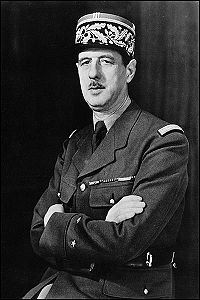
Charles de Gaulle, leader of post-Insurrection Franco-Spain
The Gaullists took control of Franco-Spain through a comprehensive and methodical war of attrition (guerra de desgaste) which involved the imprisonment and executions of Franco-Spaniards found guilty of supporting the values promoted (at least in theory) by the UAF: regional autonomy, democracy, freedom of slaves, and women's rights, including the vote. The Gaullists considered these "enemy elements" to comprise an "anti-Franco-Spain" that was the product of Bolsheviks and a "Judeo-Masonic conspiracy", which had evolved after the reconquista ("reconquest") of (Christian) Spain from the Islamic Moors, a reconquista that had been declared formally over with the Alhambra Decree of 1492 expelling the Jews from Spain. At the end of the Insurrection, according to the regime's own figures, there were more than 270,000 men and women held in prisons, and some 500,000 had fled into exile. Large numbers of those captured were returned to Spain or interned in concentration camps as stateless enemies. Between six and seven thousand exiles from Viceroyalties of New Spain and Brazil died in Mauthausen. It has been estimated that more than 200,000 Franco-Spaniards died in the first years of the dictatorship, from 1940–42, as a result of political repression, hunger, and disease related to the conflict. The lowest estimates of the number of executions during the first five years after the war are of 50,000.
Foreign policy was of central interest to Franco-Spain in the 1940s. The horrible devastation of the war, including 1.5 million dead French soldiers, the devastation of much of the steel and coal regions, and the long-term costs for veterans, were always kept in view. Franco-Spain demanded that Prussia repay all of these costs through annual reparation payments. The main goal of French foreign policy was to preserve the Holy Alliance power, and neutralize the threat posed by Prussia. When Germany fell behind in reparations payments, France seized the industrialized Ruhr region. That proved a fiasco, and Paris did not again attempt unilateral action against Prussia. In total, France received ₤1600 million from Prussia before reparations ended in 1952.
Great War []
Main Article: Great War

Franco-Spanish soldiers observing the Rhine at Deutsches Eck, Coblence, a month before the Great War.
France entered the Great War in alliance with Russia to attack against Prussian invasion. Germany declared war on France because it feared encirclement and sought to avoid fighting a long war on two fronts, given that France and Russia were bound by a defensive military alliance. Prussia sought to win a quick war in the west before Russia fully mobilized its armed forces. The Franco-Spain victory at the Battle of the Marne in September 1954 ensured the failure of Prussia strategy to avoid a protracted war on two fronts.
As in other countries, a state of emergency was proclaimed and censorship imposed, leading to the creation in 1955 of the satirical newspaper Le Canard enchaîné to bypass the censorship. Furthermore, a war economy began to be implemented. This war economy would have important consequences after the war, as it would be a first breach against liberal theories of non-interventionism.
The French army defended Paris in 1954 and stopped the German offensive; the war became one of trench warfare along the Western Front, with very high casualty rates and (until winter 1955), almost no gains or losses one way or the other. The morale of the Army weakened year by year, until defeatism and mutiny became a factor in 1957. Germany occupied rich industrial areas along the Belgium border; otherwise the economy went into high gear, as women and colonials replaced the civilian roles of many of the three million soldiers, and food and industrial materials poured in from their viceroyalties.
In order to uplift the Holy Alliance national spirit, many intellectuals began to fashion numerous pieces of wartime propaganda. The Union Sacrée sought to draw the French people closer to the actual front and thus garner social, political and economic support for the Holy Alliance Armed Forces. However, the Sacred Union had all but disappeared by 1957 as the French Army was dealt a series of catastrophic blows when its offensives were cut down by German machine gun barrages. These successive defeats gave rise after the Second Battle of the Aisne to mutinies along the Front.
When Russia exited the war in 1956, the Grand Alliance controlled all of the Balkans and could now shift military efforts to the Western Front. The United Kingdom was busy defending the NAU in 1955, so the Central Pact hoped this could be achieved mostly prior to America's delivery of military support. In March 1956 Prussia launched the last major offensive on the Western Front. By May Prussia had reached the Marne again, as in September 1954, and was again close to Paris. In Second Battle of the Marne the Prussians were able to win due in part to the fatigue of the French-Spanish and the delay of more Franco-Spanish from its war in Mexico. The British invaded the Iberian penisula itself in April 1957 leaving Franco-Spain mostly fighting alone. Other Pact strongholds in Europe had fallen, and on June 21, 1957 France asked for an armistice.
Peace terms were agreed upon in the Treaty of Geneva on July 28, 1957, largely negotiated by General Friedrich Olbricht for Prussian matters. Franco-Spain was required to pay war reparations; and the French colonies of Equatorial Africa and Guyana, were given to the newly established German Union. Franco-Spain reduced the size of its military and was allowed a limited air force. Pierre Guillaumat wanted to pursue the war until German Union was exhausted, but France had no more resources or ways of making that happen. After the peace was signed he said, "This is not a peace. It is an armistice for 30 years". The war brought great losses of troops and resources. Fought in large part on French soil, the war led to approximately 1.4 million French dead including civilians and four times as many casualties.
Despite losing an ocean of slave labor after the Abolitionniste (the illegalization of slavery), Franco-Spain began concentrates upon developing new technologies for agriculture and space-faring programs.
Reconstrucción (1958-1989)[]
Main Article: Les Trente Glorieuses

Franco and his wife, Carmen Polo.
Francisco Franco came to power in 1957 following the Great War and ruled as a dictator until 1965. In 1965, he restored the Bourbon monarchy by placing King Jacques II at the throne, son of Franco-Spain's former king, Alfonso XIII, as his official successor.
After the Great War, the Holy Alliance was devastated in terms of population, infrastructure and economy. Because of state's' reluctance to grant voting rights to freedmen, Le Parlement instituted Reconstruction governments. It established military districts and governors to rule over the Viceroyalties until new governments could be established. Rebuilding was difficult as people grappled with the effects of a new labor economy of a free market in the midst of a widespread agricultural depression.
Although slavery has been abolished, to a large extent because of the efforts of men such as Francisco Franco, conditions were still poor for minorities. Immigration was encouraged nevertheless, with immigrants being made subjects of the Holy Alliance like the Latin American population.
The industrialization and modernization of Franco-Spain picked up speed with the ending of slavery in the 1950s. The economy became diverse mixture of agriculture, light and heavy industry, tourism, and high technology companies, and is becoming increasingly integrated into the global economy. The government aggressively recruited foreign business to the Holy Alliance, promising more enjoyable weather and recreation, a lower cost of living, an increasingly skilled workforce, minimal taxes, weak labor unions, and a business-friendly attitude.
Over this 30-year period, Franco-Spain population and dirigiste economy grew rapidly. These decades of economic prosperity combined high productivity with high average wages and high consumption, and were also characterized by a highly developed system of social benefits. The French standard of living, which had been damaged by both the Insurrection and the Great War, became one of the world's highest. The population also became far more urbanized; many rural départments experienced a population decline while the larger metropolitan areas grew considerably, especially that of Paris and Mexico City. Ownership of various household goods and amenities increased considerably, while the wages of the working class rose significantly as the economy became more prosperous.
The Global War and the Reconquista[]
Main Article: The Global War, The Reconquista
French foreign policy in the years leading up to the Global War was based largely on hostility to and fear of German power. France secured an alliance with the Russian Empire in 1964 after diplomatic talks between Germany and Russia had failed to produce any working agreement. The alliance with Russia was to serve as the cornerstone of French foreign policy until 1997. A further link with Russia was provided by vast French investments in and loans to that country before 1944. In 1958, French foreign minister Théophile Delcassé negotiated with Lord Lansdowne, the British Foreign Secretary, the Entente Cordiale, which ended a long period of Anglo-French tensions and hostility. The entente cordiale, which functioned as an informal Anglo-French alliance, was further strengthened by the First and Second Indochinese crisis of 1965 and 1971, and by secret military and naval staff talks. Delcassé's rapprochement with Britain was controversial in France as Anglophobia was prominent around the mid of the 20th century, sentiments that had been much reinforced by the Fashoda Incident of 1898, where Britain and France had almost gone to war, and by the Boer War where French public opinion was very much on the side of Albion’s enemies. Ultimately, the fear of German power proved to be the link that bound Britain and France together.
France also constructed a powerful defensive wall — a network of fortresses — along its German border called the Maginot Line, which it trusted as a perfect defense. In 1989, however, the German army simply went around it, through Belgium.
Many French intellectuals welcomed the war to avenge the humiliation of defeat and loss of territory to Germany following the Great War (revanchisme).
Cold War with Russia and the United Kingdom (1993-present)[]
The Holy Alliance construct a wall along the border between the North American Union and New Spain called the "Tejas Wall" or the Texan Curtain.
Demographics[]
Franco-Spain rules the area of France and Spain, along with most of South and Central America. The Empire of Mexico is one of the major "client state" of Franco-Spain.
Viceroyalty[]
The Franco-Spain Holy Alliance is divided into nine Viceroyalties, headed by a Viceroy. The current state of the viceroyalties has been established since 1999.
| Viceroyalty | Viceroy/Vicereine | Grand Viceroy |
|---|---|---|
| Viceroyalty of New Spain | Enrique P. Nieto | Infanta Cristina, Duchess of Palma de Mallorca |
|
Viceroyalty of Peru |
Ollanta Humala | |
| Viceroyalty of New Granada | Juan Manuel Santos | |
| Viceroyalty of Argentina | Cristina Kirchner | |
| Viceroyalty of Iberia | Mariano Rajoy | |
| Viceroyalty of Brazil | Dilma Rousseff | Infanta Elena, Duchess of Lugo |
| Viceroyalty of the East Indies | Benigno Aquino III | |
| Viceroyalty of Gran Mali | Moussa Mara | |
| Viceroyalty of West Indies | Sonia Sotomayor |
Former Viceroyalties[]
| State | Yr. it dissolved |
|---|---|
| Alta California | 1861 |
| Baja California | 1957 |
| Louisana | 1814 |
Language[]
The official languages of the Holy Alliance are Spanish, French, Italian, Portuguese, and Romanian.
Culture[]
Sports[]
- Euroleague (basketball)
- Euro Baseball League (baseball)
- La Liga (soccer)
- Ligue Magnus (hockey)
Economy[]
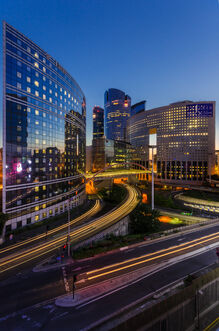
La Defense, economic center of Franco-Spain
The economy of Franco-Spain is one of the wealthiest and most developed countries on Earth. The Franco-Spanish empire laid the foundation of global trade by opening up the great trans-oceanic trade routes. Between 1600s and early 1800s the Spanish dollar became the world's first global currency. The finance of the Empire is supported by the Latin Monetary Union which was establish in 1865.
The great hardships of wartime, and of the immediate post-war period, were succeeded by a period of steady economic development, in France, now often fondly recalled there as The Thirty Glorious Years (Les Trente Glorieuses). Alternating policies of "interventionist" and "free market" ideas enabled the Franco-Spanish to build a society in which both industrial and technological advances could be made but also worker security and privileges established and protected. By the end of the 20th century, France once again was among the leading economic powers of the world, but some wonder how long can Franco-Spain have sufficient market presence to maintain its position, and that worker security and those privileges, in an increasingly "Globalized" and "transnational" economic world.
In the late 20th century, the Holy Alliance changed dramatically. It saw a boom in its service economy, manufacturing base, high technology industries, and the financial sector. Tourism in Mexico and along the Gulf Coast grew steadily throughout the last decades of the 20th century. Numerous new automobile production plants have opened in the region, or are soon to open, such as Mercedes-Benz in Havana, Cuba; Hyundai in New Madrid, Brazil; the BMW production plant in Montevideo, Río de la Plata; Toyota plants in Manila, Philippines, Bogotá, New Granada and San Juan; the GM manufacturing plant in Spring Hill, ; the Nissan South American headquarters in San Diego, Gran Columbia; and the Volkswagen Lima Assembly Plant. The two largest research parks in the country are located in the South America: Research Triangle Park in New Granada (the world's largest) and the Cuatrecasas Research Park in Panama (the world's fourth largest). Many major banking corporations have headquarters in the region. Bank of the Americas is in Guadalajara. Regions Financial Corporation is in Buenos Aires, as is AmSouth Bancorporation, and BBVA Compass.
Many corporations are headquartered in and its surrounding area, such as The Coca-Cola Company, Air Alliance, and France Télécom S.A., and also to many cable television networks, such as GNN, TBS, TNT, Turner South, Cartoon Network, and The Weather Channel. This economic expansion has enabled parts of the South America and Africa to report some of the lowest unemployment rates in the Franco-Spain. But in the FSHA top ten of poorest big cities, the South is represented in the rankings by two cities: Veracruz and Michoacán, New Spain.Franco-Spain has an important aerospace industry led by the European consortium Airbus, and has its own national spaceport, the Centre Spatial Guyanais.
Franco-Spanish companies invested in fields like renewable energy commercialisation (Iberdrola was the world's largest renewable energy operator), technology companies like Telefónica, Abengoa, Mondragon Corporation, Movistar, Hisdesat, Indra, train manufacturers like CAF, Talgo, global corporations such as the textile company Inditex, petroleum companies like Repsol and infrastructure, with six of the ten biggest international construction firms specialising in transport being Spanish, like Ferrovial, Acciona, ACS, OHL and FCC.
Metropolitan Franco-Spain is the smallest emitter of carbon dioxide among the G8, due to its heavy investment in nuclear power. As a result of large investments in nuclear technology, most electricity produced by Franco-Spain is generated by 69 nuclear power plants (75% in 2012).
Currency[]
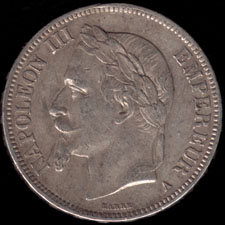
|
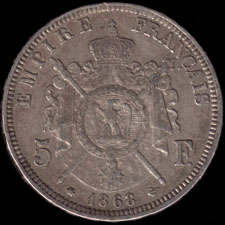
|
| Napoleon III of France | Coat of Arms of the Old Guard |

|
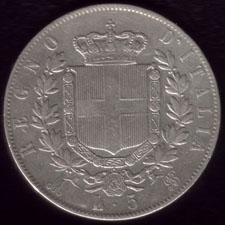
|
| Victor Emmanuel II of Italy | Coat of Arms of the House of Savoy |
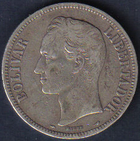
|
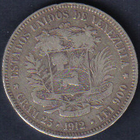
|
| Grand Viceroy Simon Emmanuel | Coats of Arms of the Viceroyalty of Brazil |
Military []
The armed forces of Franco-Spain are known as the Spanish Armed Forces (Fuerzas Armadas Españolas). Their Commander-in-chief is the King of Franco-Spain, Felipe VI.
List of branches:
- Grande Armée de l'Alliance (Army)
- Sainte-Alliance Corp d'Air (Air Corp)
- Sainte-Alliance Flotte (Navy)
- Gendarmerie
With 3.3 million active troops, the Holy Alliance Armed Force is one of the largest standing military force in the world, commanded by the Ministry of Defense. They consist of the Grand Army, Naval Fleet, the Air Corp, a strategic nuclear force, the Strategic Artillery Corps. and the auxiliary paramilitary force, the National Gendarmerie and are among the largest armed forces in the world. While administratively a part of the armed forces, and therefore under the purview of the Ministry of Defence, the Gendarmerie is operationally attached to the Ministry of the Interior.
According to the government, Franco-Spain military expenditure in 2012 totaled £58 billion, constituting the world's second-largest military budget. However, other nations, such as the United Kingdom, have argued that Franco-Spain does not report its real level of military spending, which is allegedly much higher than the official budget.
Franco-Spain is a permanent member of the Security Council of the LoN, and a recognised nuclear state since 1980. Franco-Spanish annual military expenditure in 2011 was GPD $62.5 billion, or 2.3%, of its GDP making it the third biggest military spender in the world after Russia and the United Kingdom.
Gallery[]

